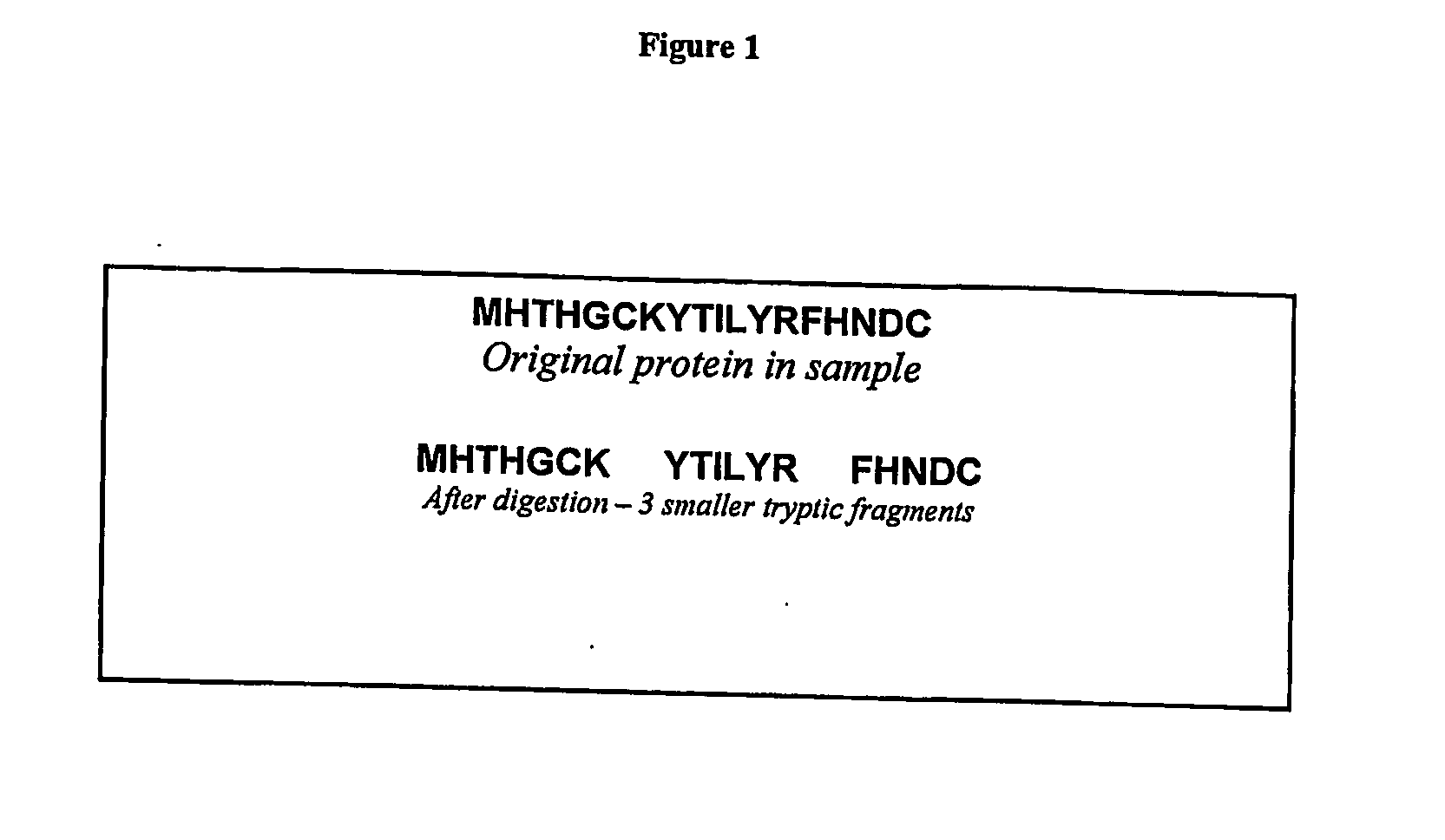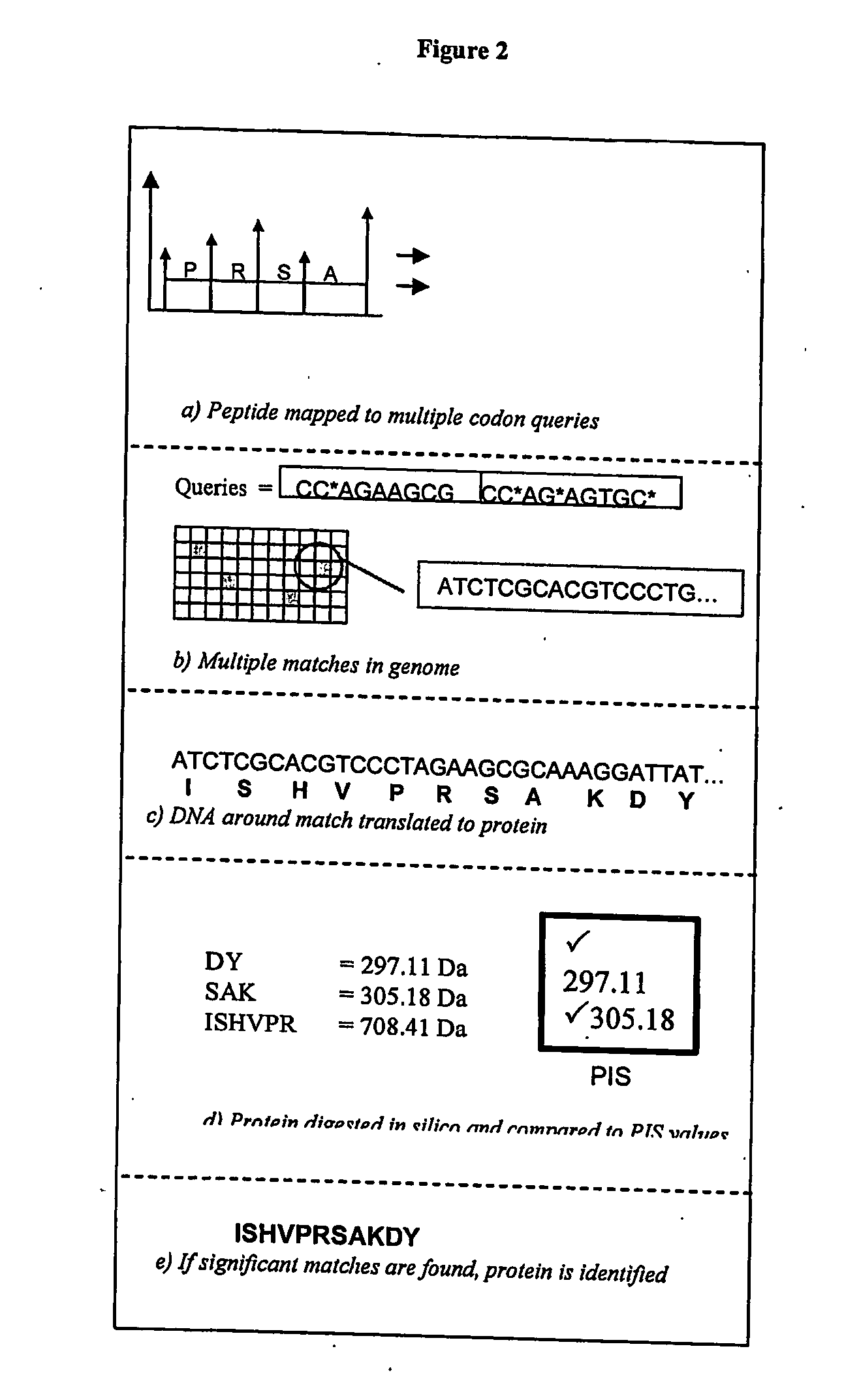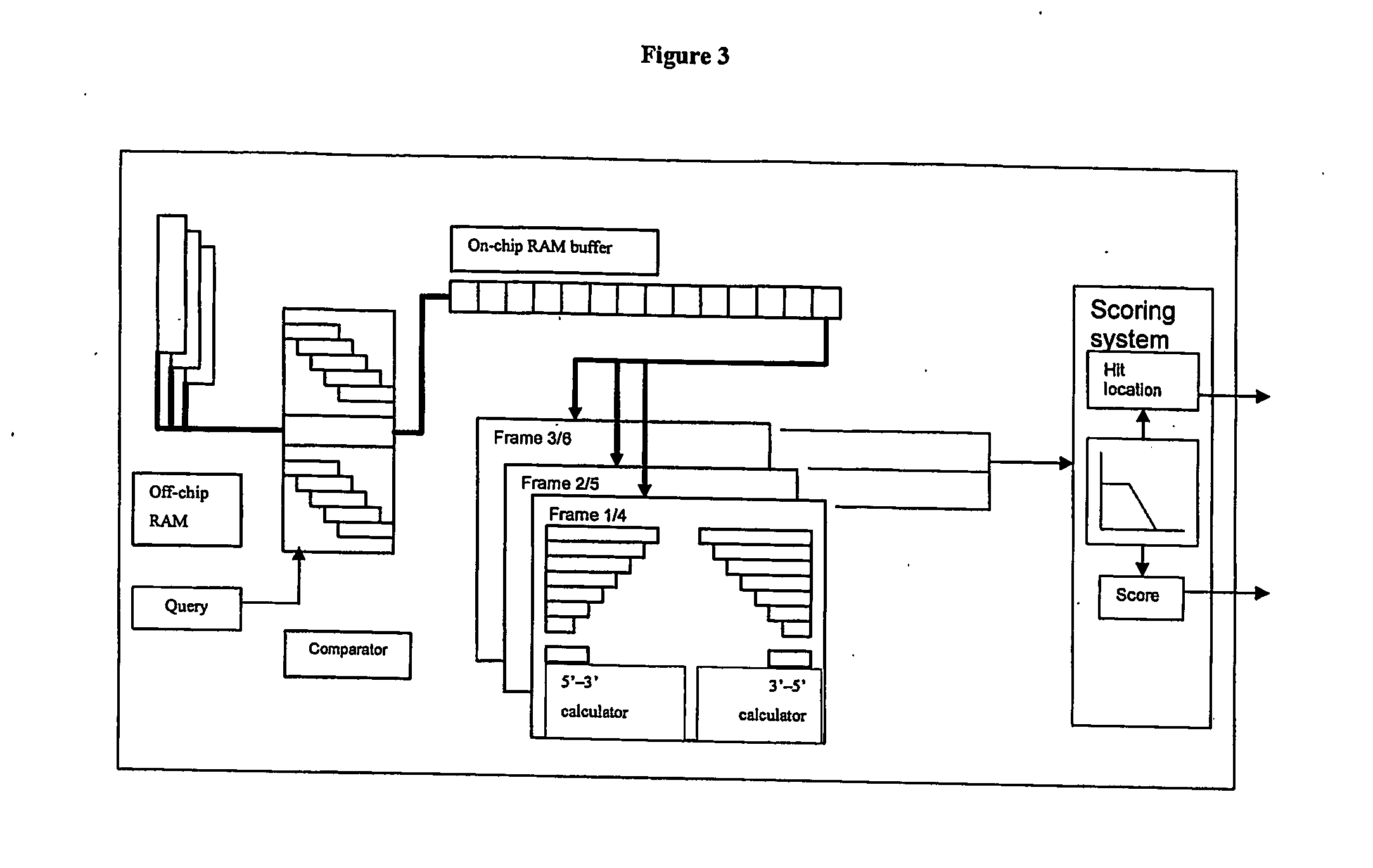Protein identification methods and systems
- Summary
- Abstract
- Description
- Claims
- Application Information
AI Technical Summary
Benefits of technology
Problems solved by technology
Method used
Image
Examples
example 1
In-Silico Search Strategy
[0129] A protein sample can be prepared for mass spectrometric analysis by standard techniques (8). If a specific proteolytic enzyme such as trypsin is used the peptide will be cleaved at its K and R residues (except where followed by Proline). This process is illustrated in FIG. 1.
[0130] These peptide fragments are introduced into the first stage of a tandem mass spectrometer through a variety of techniques (9) (10). There are generally three stages of MS / MS operations. In the first stage, the mass spectrometer performs what is known as the precursor ion scan (PIS). The PIS gives an overview of the tryptic fragment masses in the sample. In the next stage, the MS can then act as a filter to selectively pass fragments within a certain range into the next chamber. Here the tryptic peptides are allowed to fragment through collision with trace gases (e.g. N2). The next chamber is used to accurately measure the mass of collision-induced fragments, which are se...
example 2
[0177] This example describes a hardware system of the invention for sequencing proteins. The design of the system takes three primary inputs, namely: [0178] 1. A peptide query from the MS, which is a string of 10 amino acids or less, [0179] 2. A genome database, [0180] 3. A list of peptide masses detected by the MS.
[0181] The design produces a set of outputs for a given peptide query: [0182] 1. A set of gene locations, which can code the input peptide query [0183] 2. A set of scores for each gene location. The scores rank the genes based on the likelihood that they coded the protein in the sample.
[0184] The hardware identifies all locations in the genome that can code the peptide query and then translates these gene locations into their protein equivalents. It then compares the peptides in the translated proteins to the peptides detected by the MS and provides a ranking for each gene location based on how well it matches the masses detected by the MS. These gene locations can be ...
example 3
Implementation Details & Results
Overview
[0273] A protein identification system described herein performs a reverse translated peptide query search through a Genome database. It locates all genes that can potentially code the query peptide and translates them into proteins. It then uses a variant of the MOWSE algorithm to compare the masses of these translated proteins to the masses in the PIS of a tandem mass spectrometer. This technique identifies and ranks potential coding regions for a protein or set of proteins in an MS sample. The coding regions can be sent to gene finding programs (24) (25) or homology search tools (19) to obtain the protein sequence.
Input Data
[0274] For this study MS data was used from the organism Saccharomyces cerevisiae, commonly known as baker's yeast. The yeast genome is an excellent model for the human genome since both are eukaryotes and thus share several similar proteins (21). The yeast genome (17) consists of 12070522 bases, which defines the...
PUM
| Property | Measurement | Unit |
|---|---|---|
| Acidity | aaaaa | aaaaa |
| Nucleic acid sequence | aaaaa | aaaaa |
| Magnetism | aaaaa | aaaaa |
Abstract
Description
Claims
Application Information
 Login to View More
Login to View More - R&D
- Intellectual Property
- Life Sciences
- Materials
- Tech Scout
- Unparalleled Data Quality
- Higher Quality Content
- 60% Fewer Hallucinations
Browse by: Latest US Patents, China's latest patents, Technical Efficacy Thesaurus, Application Domain, Technology Topic, Popular Technical Reports.
© 2025 PatSnap. All rights reserved.Legal|Privacy policy|Modern Slavery Act Transparency Statement|Sitemap|About US| Contact US: help@patsnap.com



